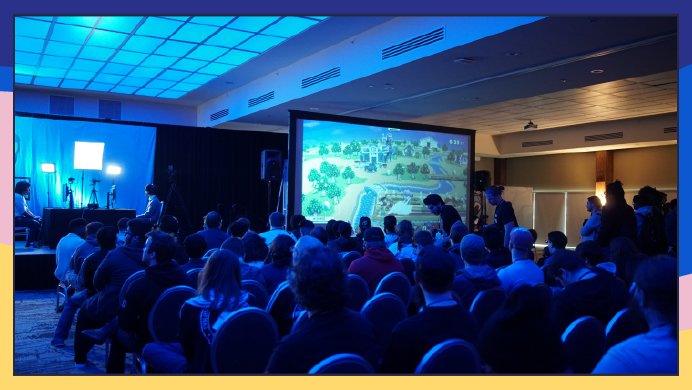Have you started building microcontent yet? Everyone’s doing it—or at least that’s how it feels. And expectations are high. Employees expect in-house microcontent to be like their experience on Google and YouTube, but customized to the company, and perhaps even their job role. That’s a high bar. Focus on these five things to meet those expectations when you create microcontent for the people in your organization.
1. Make it easy.
Learners not only expect but demand that microcontent be easy to search for, easy to access, and easy to run, see, and interact with on their device of choice. To provide this seamless user experience, you must:
- make solid decisions up front about how and where content will be stored and served (which directly impacts how hard it is to search and access);
- design for mobile access and small screens (which means minimizing issues with squinting eyes and fat fingers); and
- test microcontent across many devices, in the locations and times learners will actually access the content.
If you don’t address these foundational needs, nothing else you do will matter because your learners won’t stick around long enough to see it. Get these right, and you will have a good foundation to build on. (For a deeper dive, see 7 Essentials of a Successful Mobile Learning Strategy.)
2. Make it for me.
Use real examples, relevant to me and my work. Real case studies with recognizable location names, explained by real, respected employees, have an entirely different weight for learners than generic hypotheticals. Use that power! Make it just for me. Don’t expect people to sit through or sort through content that doesn’t apply to them. When you have different audiences with different roles, create separate microcontent for each. Think of the booklet that came with your last power tool. How much time did you spend puzzling out which sections applied to your particular model versus the other three models covered in the same booklet? Don’t do that to your learners.
Make it easy to tell which content is right for me, out of all the content out there.
- Tag it, title it, and organize it visually in buckets labeled for my job role, or even for me personally. Learning maps and role-based portals can help, as in this example.
- Use visual design cues that look right to me. Not too slick, not too hokey, not too whatever. Know your audience so you know what will feel right to them.
- Use my language/dialect/accent.
- Use my words. Call things what I call them so I can find them when I search, and be confident that you know what you’re talking about, and that I understand what you mean.
These cues tell me I belong here and this is the right content for me, which increases both my confidence and the credibility of the content.
3. Make it high impact.
Keep content short. Convey critical things, not all the things. Yes, the name “microcontent” is a big hint, but it can be hard to rein in the tendency to include “one more thing.” Just remember, when an employee is standing in front of a machine with a spare part in hand, a two-minute video that shows exactly how to change that part is far more useful than a ten-minute video with the part change buried in the middle. Have mercy and put all possibly-relevant information in links at the end, not in the main body.
Keep it clear and simple. Microcontent is not the place for 15 variations on a theme—that’s the in-depth advanced course or the discussion forum. Microcontent needs to be clear, sharp, and short. If the topic really needs all 15 variations discussed in one place, consider creating a suite of linked microcontent instead if cramming it all into one piece.
Simple does not mean dumbed down. Make questions and quizzes “real,” not obvious multiple choice selections. Make me think. Make me apply my learning. Yes, I want to succeed and get the answer right—but I want to earn it and know I earned it. Making quizzes too easy sends the message that the quiz doesn’t matter, or maybe that you don’t expect me to be smart enough to do better. If you’re going to test, take the testing seriously so I can, too.
4. Make it part of a larger program.
Microcontent by its nature must be able to stand alone. But don’t think for a minute that it can’t also be part of a bigger picture. For greatest impact, give the learner the chance to follow their curiosity from the first microcontent they access to related pieces. Let them dig into the larger context of the topic, the job, the values, the mission. Following their own curiosity, their openness to learning is high. Help them get what they want and need by giving them options. Amazon has shown us the power of “you might also like…,” and a sidebar of related videos has enticed many a person to investigate further on YouTube. What if your employees found your learning offering even half that enticing?
Tying microcontent into a larger context is best accomplished not as an afterthought when you’re cranking out individual microcontent pieces. Instead, you can use microcontent as a key design element of larger programs. In the way that many tiny bites can make a meal, you can design full courses comprised mostly of microcontent—even if the full course is intended for desktop, not mobile, delivery.

In this example, the WBT course is a shell that ties together many pieces of microcontent. The microcontent is served to the learner in context and in sequence if they take the course. But they can also search for and view the microcontent pieces independently, as a refresher after the course, or even if they never take the course. That extends the value of each content piece, and lets a learner know there’s more out there when they are ready for it. It also makes the WBT easy to chew and swallow for people fitting training in between other activities and interruptions.
5. Make it social.
Even given the minimal time and space available in microcontent, seize the chance to make it do double or triple duty. As each piece delivers the content the learner was seeking, use opportunities to also build social connections and help employees see how they contribute to worthwhile larger goals and efforts. This doesn’t mean adding extra time to the microcontent. Rather, it means keeping these opportunities in mind as you make design choices for that microcontent. Examples:
- Select images that exemplify a point of pride for this audience.
- Reinforce the learner’s identity as part of the company. Real photos of real employees like the learner are far more impactful than stock photos.
- Mention or show how this skill/behavior contributes to a worthwhile larger value/goal/mission (e.g., fatality prevention, productivity, reduced environmental impact, first in class service delivery).
- On videos and articles, include a way to leave comments and read others’ comments.
- Add links to community of practice forums on the topic so learners can ask questions and pursue deeper knowledge.
When your microcontent is part of a larger program, you can add layers of interactivity like leveled challenges and game-like assessments with leader boards for friendly competition.
Addressing social aspects and opportunities in your microcontent can boost learning, recall, and adoption of new behaviors, and also build a sense of belonging, which can increase employee retention. (More on this in our next post, How to Adapt Your Microcontent to Your Employees’ Social Needs.)
Engaging microcontent can be the norm in your organization instead of the exception. Just keep these 5 vital elements in mind:
- Make it easy.
- Make it for me.
- Make it high impact.
- Make it part of a larger program.
- Make it social.







